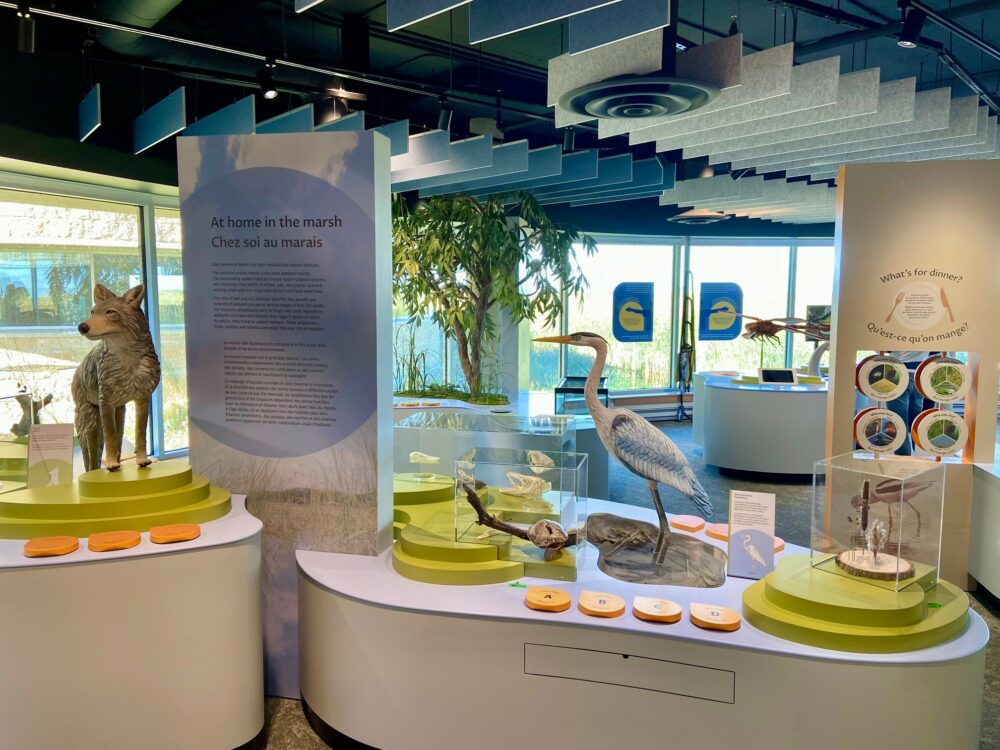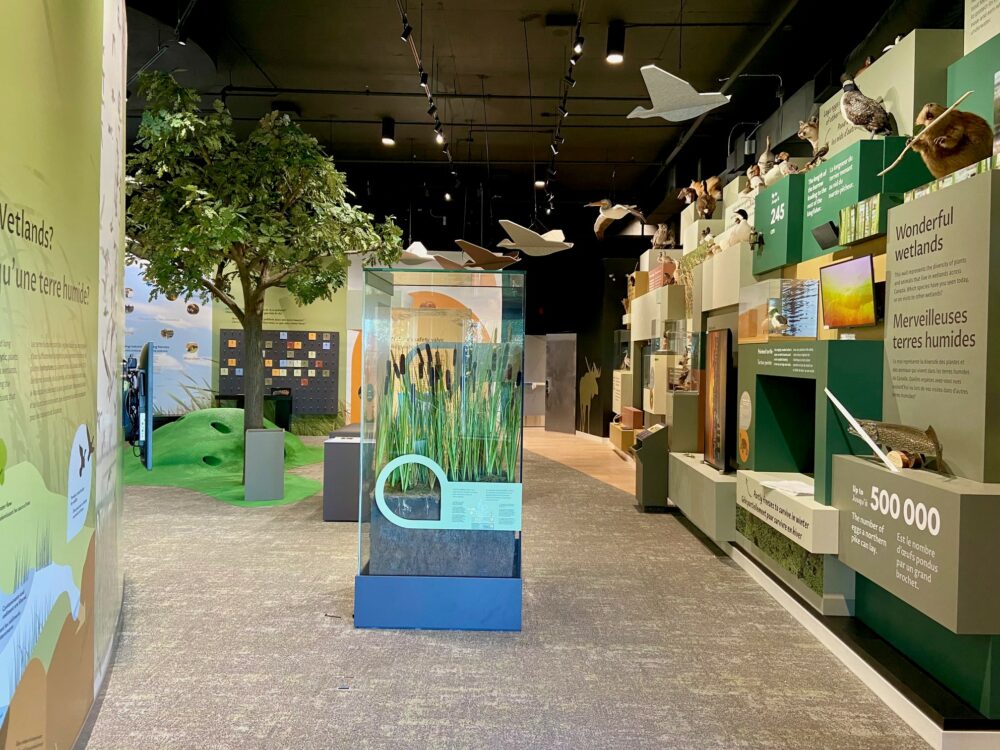Type and press “enter” to search
Exhibits are Almost Done!
Kubik, the company that created our exhibits, worked tirelessly throughout the summer to assemble the many exhibits at the Oak Hammock Marsh Wetland Discovery Centre. These exhibits will serve several important purposes related to education, conservation, and the environment. Here’s a quick sneak peek at some of them.
The exhibits provide educational content about the significance of wetlands, their ecosystems, and the biodiversity they support. They explain the roles wetlands play in filtering water, preventing floods, and serving as crucial habitats for various species, especially waterfowl and other migratory birds. This picture above is the newly refurbished and upgraded diorama, located at the entrance of the Wetland Discovery Centre. It will now illustrate a wetland daily cycle with various lighting and sounds effects.
Many exhibits focus on the wildlife that depends on wetlands, such as waterfowl, amphibians, and other creatures. Visitors learn about different species, their behaviors, and their habitats, raising awareness about the importance of protecting these environments. The Feature Hall, which was formerly used to highlight temporary exhibits will now act as the main entrance to the new exhibits. As such, it will act as an introduction to the various plants and animals found at Oak Hammock Marsh.
Through interactive displays, visitors are encouraged to appreciate the need for wetland conservation. The exhibits often highlight human impacts on wetlands, such as pollution or land development, and what individuals can do to help protect these ecosystems. The Discovery Centre offers hands-on, interactive experiences to engage visitors of all ages, making learning about wetlands fun and memorable. Exhibits will include models, simulations, or opportunities to observe live specimens. The Wall of Species pictured above on the right side, is a great example of this. It will feature live animals such as turtles, snakes and salamanders, as well as mounts and virtual simulations and games to engage visitors.
Some exhibits also emphasize the cultural and historical importance of wetlands, especially for Indigenous communities that have long relied on these areas for food, shelter, and spiritual practices.
These new exhibits will aim to inspire curiosity, educate the public about wetlands, and encourage actions that support their conservation. And we are very exited to share our vision with you!




